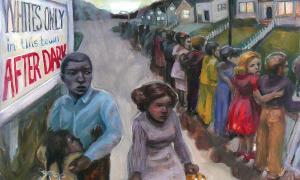text
Informational
President Obama's Address on the 50th Anniversary of Bloody Sunday

Obama's 2015 speech on the Edmund Pettus Bridge honors the anniversary of "Bloody Sunday," when hundreds of voting-rights activists were brutally attacked by state troopers as they began a march from Selma to Montgomery, Alabama. President Obama reminds us of the spirit and struggle associated with the marchers in Selma, or any group of people meeting injustice.
March 11, 2015

